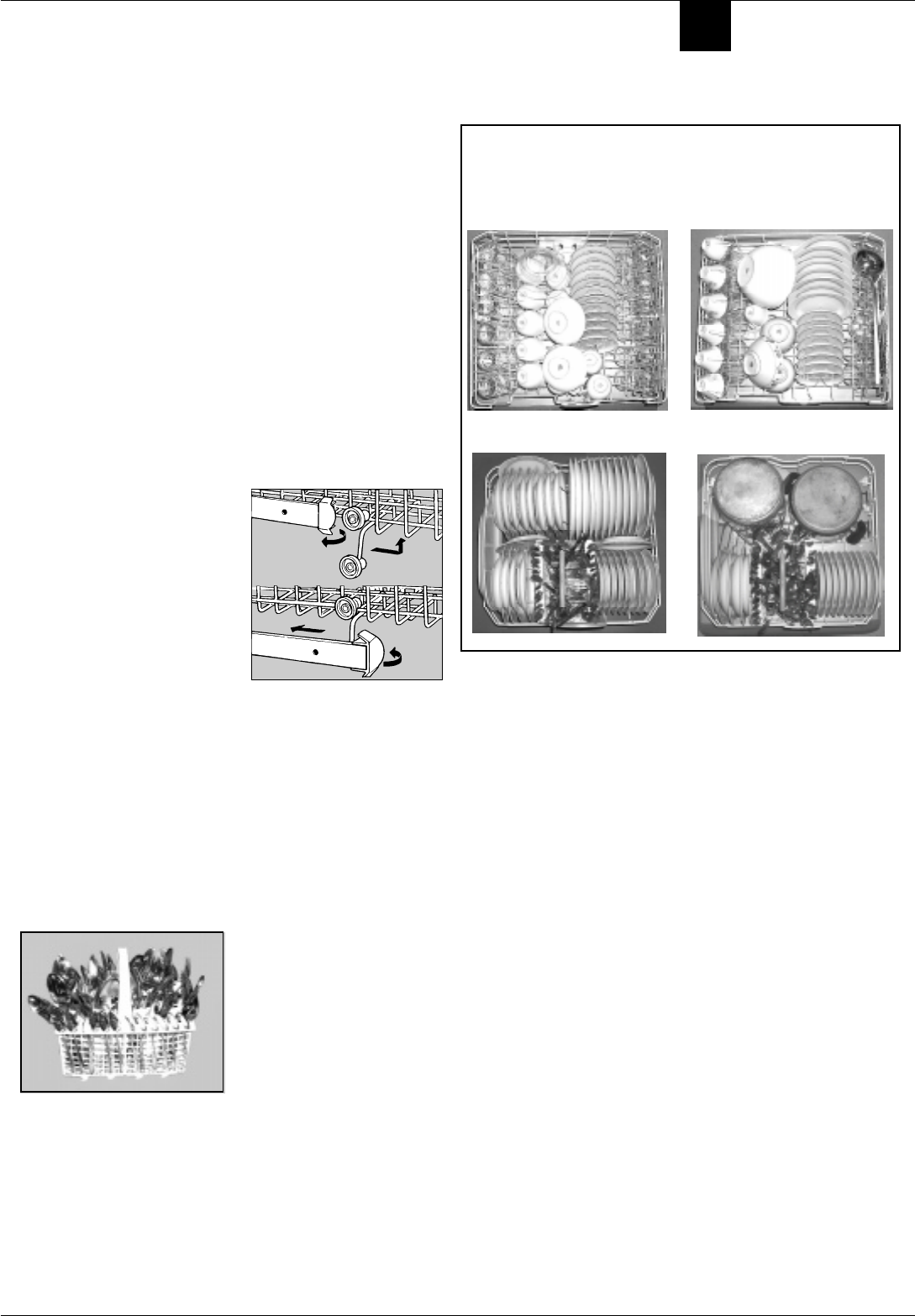
11
D
ISHWASHER
Loading your Dishwasher
First of all.
Before placing dishes in the baskets,
remove all course food remains. This
avoids blocking the filter, which would
reduce the efficiency of the wash.
If saucepans and frying pans are very
dirty, allow them to soak before being
washed.
To make it easier to load your dishes,
pull the baskets out.
What goes into the lower
basket?
We recommend you place the most
difficult dishes to wash into the lower
basket: saucepans, lids, soup dishes and
plates (a load example is shown in the
photo).
• Serving dishes and large lids:
place them on the sides of the
basket.
• Saucepans, salad bowls: must
always be placed upside down
• Very deep dishes: place them
obliquely, thus allowing water to run
down them and cleaning them better
Place the cutlery with the handles at the
bottom; if the basket is the one with side
inserts, then insert the tea spoons one
by one into the slots.
It is best if you place longer utensils
horizontally at the front of the upper
basket.
After loading the dishes, remember to
check that the spray arms can turn freely
without hitting against any dishes.
lower basket
What goes into the upper
basket?
Place delicate and lightweight dishes in
the upper basket: glasses, tea cups and
coffee cups, saucers and plates - shallow
salad bowls, slightly dirty frying pans and
shallow pans.
Position lightweight dishes in such as
way as to avoid their being moved by
the spray of water.
How to adjust the upper basket.
The upper basket can be set in high or
low position to enable you to organise
your dishes effortlessly.
Load examples
upper basket
lower basket
upper basket
Open the rail stop flaps and pull the
basket out completely. Now place it
in high or low position, then slide it
along the guide rails until the front
wheels also go in. Now close the rail
stop flaps. Follow the sequence of
actions illustrated in figure "F".
1
2
3
4
Fig.F
What can I Wash
Items not suitable for the dishwasher:
• Cutlery and tableware made from wood or part wood - They may become faded and unsightly in appearance.
• Avoid washing horn handled and bronze cutlery in the machine.
• Delicate/decorative glassware and vases, special antique or irreplaceable china - the decorative patterns printed on these
items will not be dishwasher proof.
• Plastic objects that are not resistant to hot water.
• Copper and Pewter utensils. Aluminium and Sliver objects.
• Some types of glass can become opaque in appearance after they have been washed too many times in a dishwasher.
• Highly absorbent materials such as sponges and towels should never be placed in a dishwasher.
• If in any doubt, check with the manufacturer on items suitability for dishwasher’s.
WARNING: Dishes or cutlery soiled with tobacco ash, wax, lubricating grease or paint should not be put in the
dishwasher.
Our recommendation: In future, only purchase table or kitchenware that has been confirmed - dishwasher proof.


















